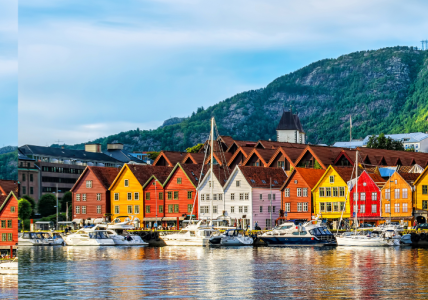With over 10,000 attendees and 300 events, the European Week of Regions and Cities is the top annual event for stakeholders to meet and discuss how to improve European regional and local governance. One of this year’s key talking points was the future Cohesion Policy 2021-2028 and the changes foreseen in Interreg funding.
The most important key words and phrases from European Week of Regions and Cities were cooperation, breaking barriers and building a united Europe.
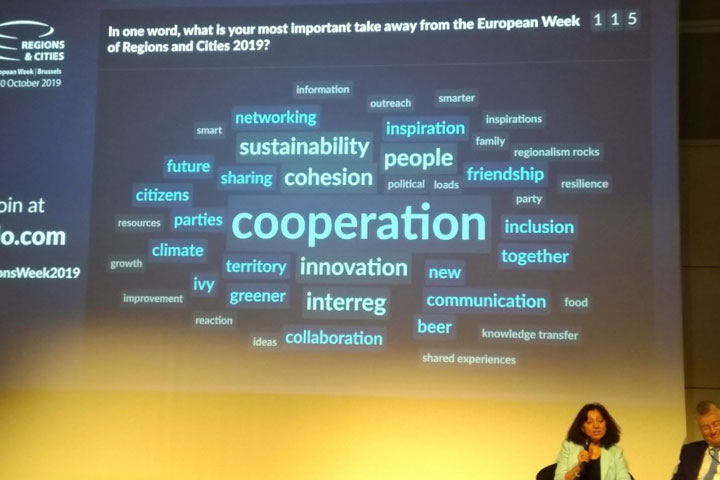
Christian Weinberger, Senior Adviser of the European Commission’s DG Internal Market, Industry, Entrepreneurship and SMEs put forward a similar message about the importance of cooperation during the joint Interreg session on ‘future transnational cooperation – what impact in a changing Europe’: “If you sit in your country and just talk to your partners, you are missing an inspiring opportunity! Interreg is about looking outside the box.”
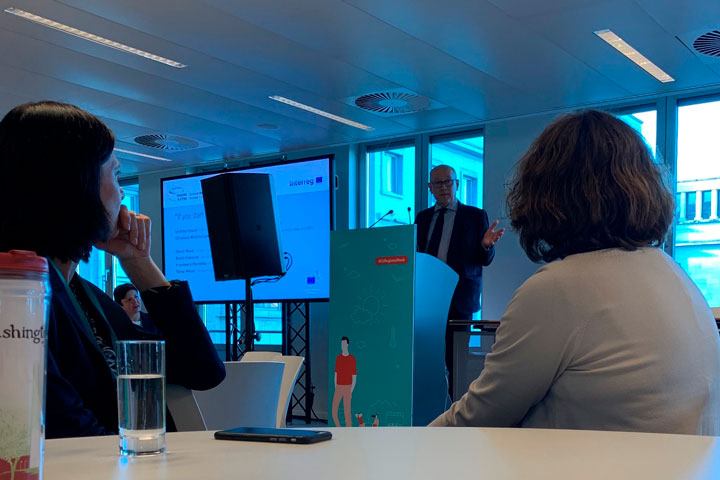
Christian Weinberger of DG GROW emphasised the importance of cooperation.
Looking outside the box, involving stakeholders and daring to set ambitions are important factors for the future EU budget period 2021 – 2027, we learned in the session ‘Cohesion Policy 2021 – 207: How to face both global challenges and the need of structural reforms’.
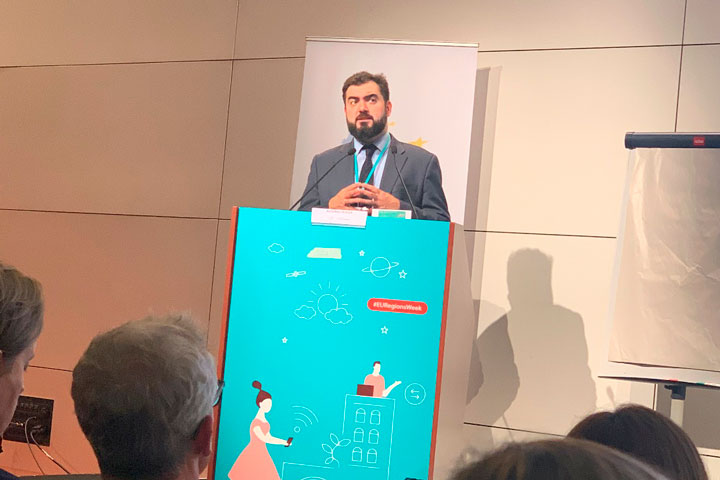
Miguel Gil-Tertre, Head of Unit at the European Semester, talked about the future Multi-annual Financial Framework (MFF).
Miguel Gil-Tertre, Head of Unit (European Semester, European Strategic Investments & Cohesion, European Commission) talked about the future Multi-annual Financial Framework (MFF) and its benefits. His key message was that country-specific recommendations formulated in the context of the European Semester will be considered at least twice over the budgetary period.
Gil-Terte also communicated to the audience his view on smart specialization, which he thinks ‘should be a method for regions to foresee their future.’
The Commission proposes to create a new component of Interregional Innovation Investments as part of the European Territorial Cooperation Interreg regulation.
With this new component, financed at €9.7 million in the 2021-2017 MFF, regions with matching smart specialisation assets will be given support to initiate pan-European clusters within a few key policy areas, such as circular economy, big data, and advanced manufacturing.
The architecture of EU Cohesion Policy post 2020

Nathalie Verschelde, Deputy Head of Unit, European Commission, presented the future objectives contained in the 2021-2027 Cohesion Policy legislative proposals in her session ‘Post 2020 – INTERREG’.
The Commission proposes to make €331 billion available for the European Cohesion Policy. Five key investment priorities will drive EU regional development and cohesion:
- A smarter Europe
- A greener, low-carbon economy
- A more connected Europe
- A more social Europe
- A Europe closer to its citizens
The proposed Interreg regulation will provide €8.4 billion, distributed among five strands of cooperation: the three traditional cooperation strands (i.e. cross-border, transnational and interregional cooperation) and two new components (one dedicated to the outermost regions and one to interregional cooperation on innovation).
Interregional and cross-border cooperation will also likely be facilitated by the new possibility for a region to use parts of its programme funding to fund projects anywhere in Europe jointly with other regions. In practice, Member States will have an instrument to overcome cross-border obstacles and develop joint services via the so-called European Cross-Border Mechanism (ECBM).
A new approach to maritime cooperation (integration of cross-border cooperation on maritime borders into an enlarged transnational cooperation and maritime cooperation component) is another novel feature in the proposal. This distinction between land-based and sea-based territorial cooperation is one of the most game-changing suggestions brought forward by the Commission as it would mean a considerable change to the current Interreg architecture. The European Parliament and the Council have already voiced their skepticism.
Verschelde announced that next to the five key investment priorities, two Interreg-specific components will be added: better governance and a safer and more secure Europe. Governance aspects will include strengthening institutional capacity and enhancing legal and administrative cooperation while the safety component will cover issues such as safety, security and migration.
There will be an effort towards harmonising result indicators for the Interreg programmes. For the first time, the proposal includes a common set of result indicators, which would allow comparisons across programmes and Member States.
Verschelde called for faster implementation and the return of the N+2 rule. According to this decommitment rule, the annual allocation must be spent within two years following the year of commitment. If, at the end of two years, the annual allocation is not spent, the corresponding ERDF budget will be lost. In the current programming period, all programmes are operating with the N+3 rule. In order to facilitate the transition from N+3 to N+2, the Commission foresees as many as 80 key administrative simplifications.
Budget proposal
The expected budget earmarked for ETC will decrease by a total of 2.5% over the programme period compared to the 2014-2020 budget. However, while cross-border programmes will see a reduction in their share of the budget, the share for transnational cooperation will increase, according to the proposal. The proposed co-financing rate for Interreg programmes will also go down – from the current rate of 85% to a 70% maximum from 2021 to 2027. The European Parliament has subsequently challenged this position.
Programme proposals can only be finalised and approved after an MFF deal has been concluded, which is expected to happen in 2019 or 2020. If an agreement is not reached in time, there is a risk of significant delays in initiating the vital steps towards new Interreg programmes. As part of the process, the European Parliament published its interim report in 2018, and the Council is expected to release its opinion under the Finnish presidency before the end of the year, Verschelde explained.
The Common Provision Regulation proposal was issued in May 2018 and includes details on programme templates. They will most likely not change too much. The European Commission has also issued orientation papers, detailing the geographic boundaries of programmes and providing an analysis of the regions and what they should consider for the future, to all cross-border cooperation programmes. Towards the end of October, these will also be sent to the transnational cooperation programmes, minus those that currently include the UK, according to Verschelde. Subsequently, the Programme has been informed that the North Sea orientation paper is expected to be sent to the Programme early November and hopefully just before the Monitoring Committee meeting in Copenhagen on 6 November. This would enable a quick start of the programming process and make it possible to deliver within the deadline provided in the draft regulations.
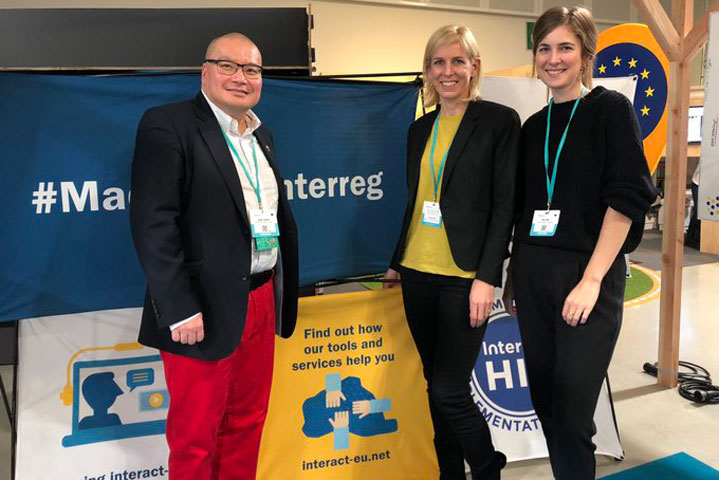
Time to say goodbye to #EURegionsWeek. Highlights from our week included watching the project 2IMPRESZ win the Interreg Project Slam 2019, the fantastic #MadeWithInterreg stand and updates on Cohesion Policy and post 2020. From left to right: Jesper Jönsson, Lise Espersen and Anne Pintz.
ABOUT THE AUTHORS
Anne Pintz and Jesper Jönsson are Project Advisors at the North Sea Region Programme Joint Secretariat.


